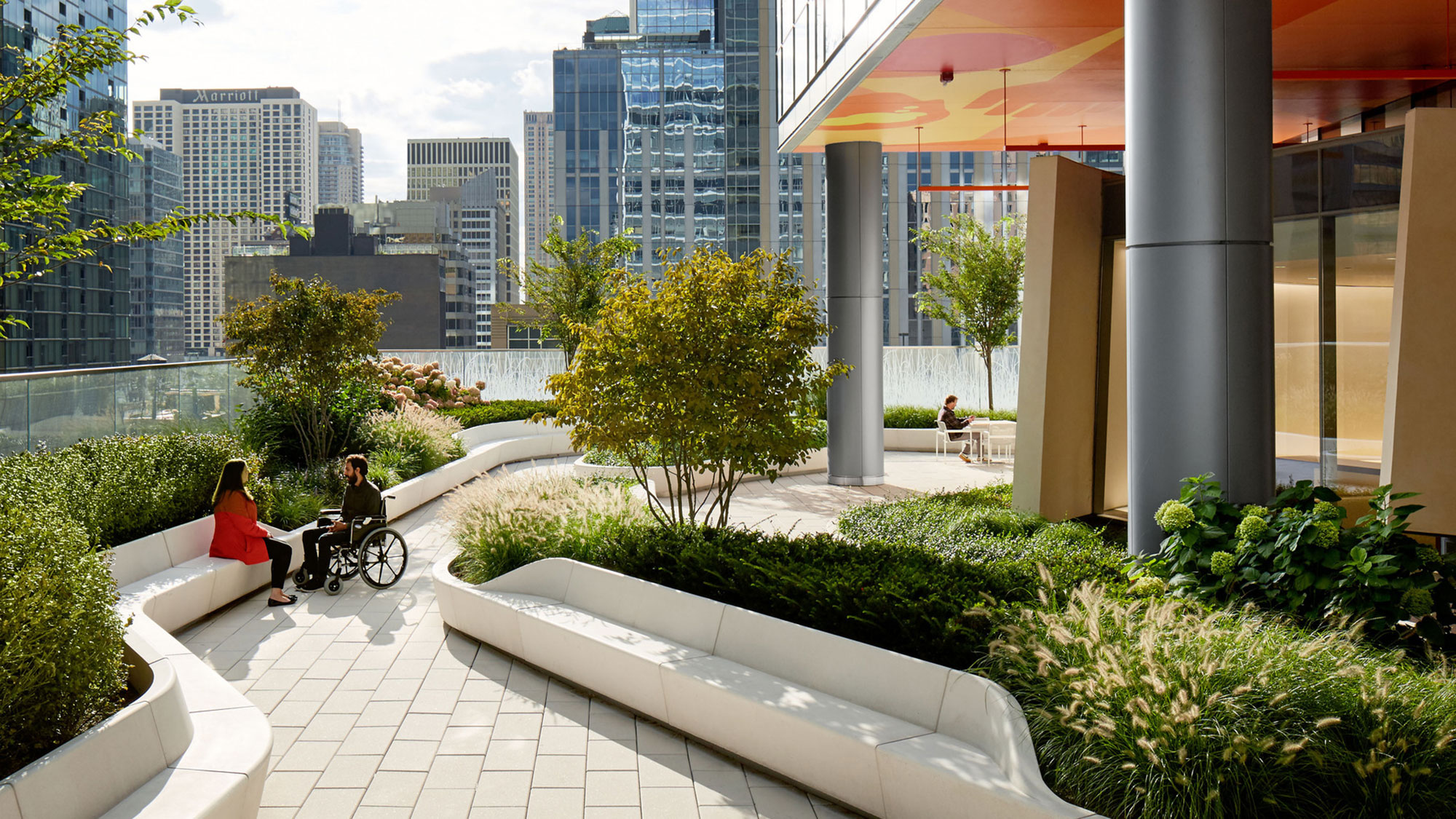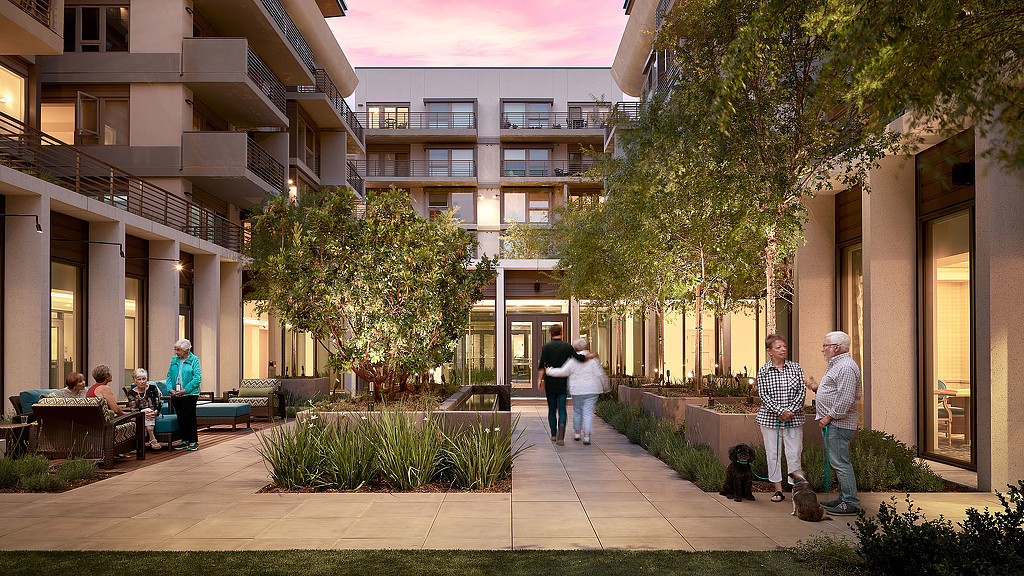Equity and Aging in the 20-Minute City
February 15, 2024 | By Michael Hendershot
In just a few short years, we will reach a significant milestone in our ever-changing demographics: in 2030, all baby boomers will be over 65 and will account for 20% of the population. As designers, we must understand where and how this group will choose to spend their retirement. For many, the choice comes down to aging in place or moving to an active adult or senior living facility.
Typically, active adult and senior living facilities are developed in suburban areas as standalone properties. Though this model works for a particular demographic, there is room to reinvent the future of senior living by prioritizing universal design principles in all projects and emphasizing connectivity and community. Universal design, or design that is accessible to all people regardless of ability or age, should be an important consideration for any development. Community and purpose are essential in senior living developments, but also foster true connectivity when studying the wider trend of 20-minute cities.
Although universal design is not a new concept, we have an opportunity to thoughtfully integrate these principles into our projects to make all assets in the 20-minute city inviting for seniors. Accessible design tenets are often utilized and almost universally mandated by code or federal law. However, what is often overlooked are design decisions centered around enhancing the lives of those with limited mobility, low vision, and hearing impairment.
During the design process, we must ask ourselves whether certain features could make users with accessibility issues feel alienated. Applying color and graphics as keys can prevent individuals with low vision from getting lost. Implementing thoughtful wayfinding can draw the attention of those with hearing impairment, which can mitigate feelings of isolation. Lastly, avoiding grade changes and materials with high slip coefficients can minimize tripping hazards.

In addition to physical design, technology also plays a role in making spaces more accessible. Artificial intelligence and digital personal assistants could positively impact a senior’s quality of life, and intentionally integrating these technologies into the design of a property can also offer a stronger feeling of connection. For example, digital wayfinding kiosks make navigating a property more seamless for a senior because the area can be explored with one central device. By providing for a person’s well-being in this way, we can offer a sense of security and peace of mind.
It is also important to consider that the 20-minute city looks much different to a senior, as an aged individual has a nuanced relationship to their home, neighborhood, and surroundings. A designer should factor in their needs when defining this paradigm; senior-friendly amenities and services must be part of the neighborhood and should be provided in an accessible, equitable, and obvious way. Creating environments that instill a sense of purpose and longevity will be critical as we assess how senior living developments can become a component of the 20-minute city.
If we embrace the opportunity to design spaces that prioritize universal design principles and connectivity, we can create more accessible and purposeful places for seniors. Furthermore, utilizing universal design strategies for seniors also benefits anyone with limited or varying abilities and allows for these individuals to interact with and live in the 20-minute city. Ultimately, this should be seen as a benefit to developers as we envision the future of senior living in the urban mix.
For media inquiries, email .

